The winter tomato harvest is coming to an end. |ENG||ESP|
English version.
After more than 2 months harvesting greenhouse tomatoes in rainy seasons (winter), the harvest is approaching its end, as probably the last flowering of the plants is the one we are cutting weekly, because the plants have been very affected by pathogens that damage their leaves and fruits and this due to the weather conditions that are occurring.
This rain is not usual, in theory there were still weeks left for the season to start properly in the months of October, however Mother Nature reversed the roles, in Europe and part of Asia there is an extreme drought, while in my continent there are unexpected rains, which affects all crops.
The tomato we have Alvaro type has approximately 5 months, 75-80 days for fruit ripening and 5 weeks cutting every 4 days, each time the amount of baskets obtained is much lower, and this is because it is ending its life cycle.
Similarly, another type Shanty is bigger by 17 days, but it is in the same conditions.
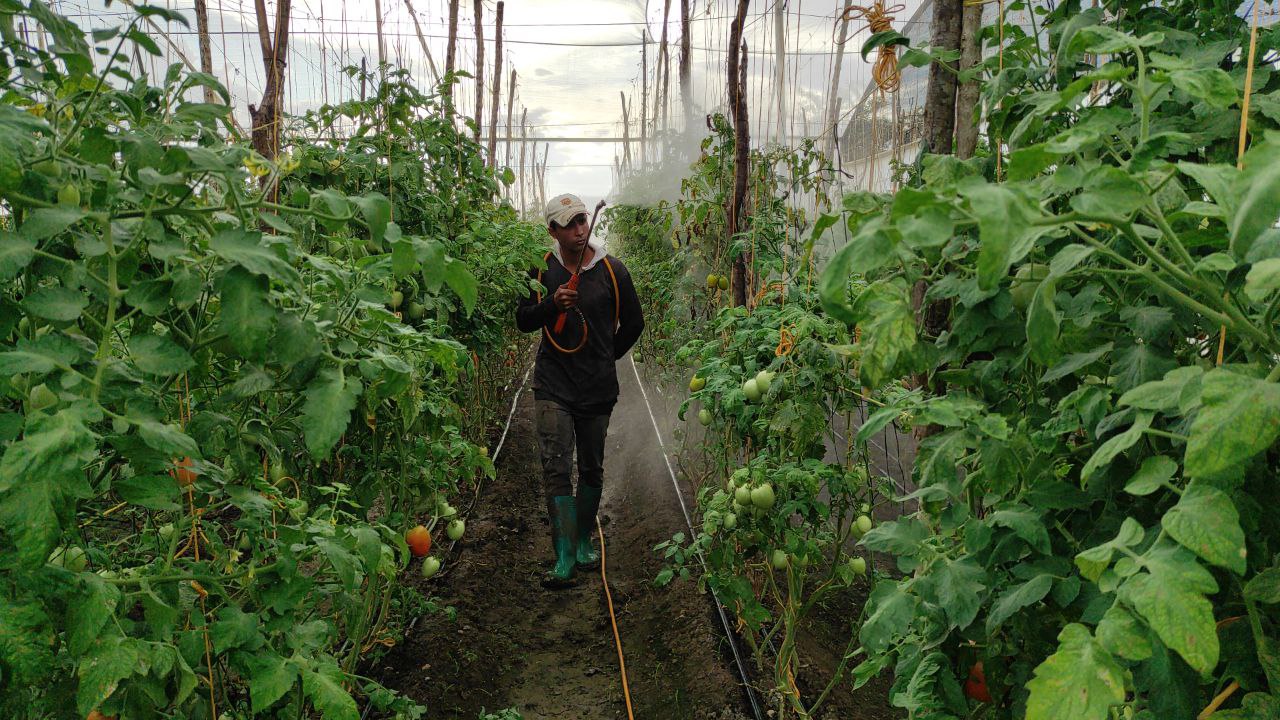
The first fruits of these plants were incredible, a unique size, brightness and consistency, the average weight of a tomato is 150-170 gr, we got tomatoes of 200gr, a real madness, besides that they had a bright rolo color very striking and the average was a bit good.
At the beginning the amount of tomato we obtained per week was the indicated, however the size decreased much more than normal and the amount of flowers also began to fall, but this was due to the rains that prevented us from administering fertilizer by irrigation, as well as micro elements to the leaves and flowers of the tomato.
The amount of labor required for a tomato crop in a greenhouse is similar to planting in open field, at least one hectare, and the expenses are higher, which should not be because the idea is to reduce costs, but in greenhouses we want the durability of the plant for months, so it must be treated very well.
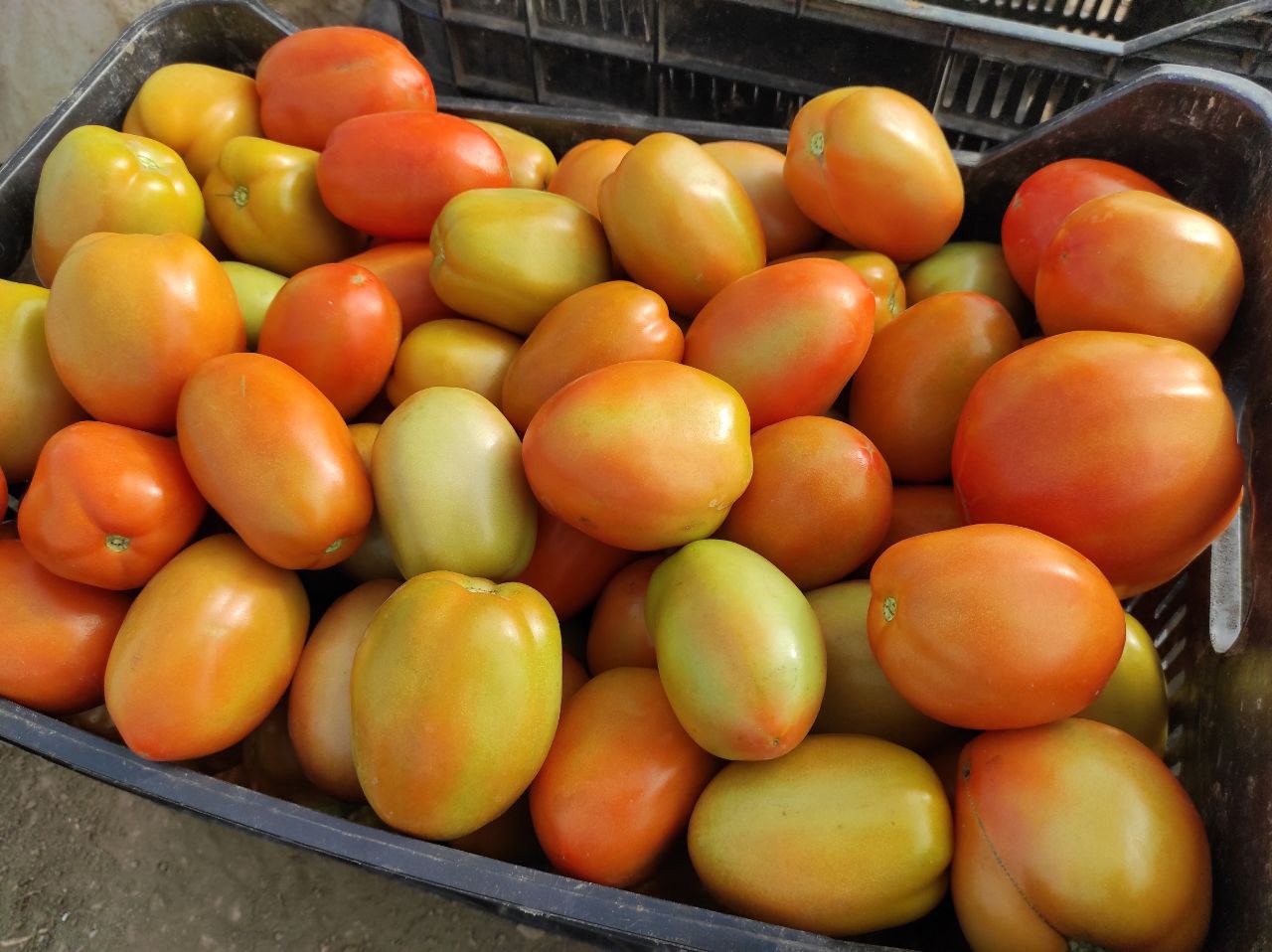


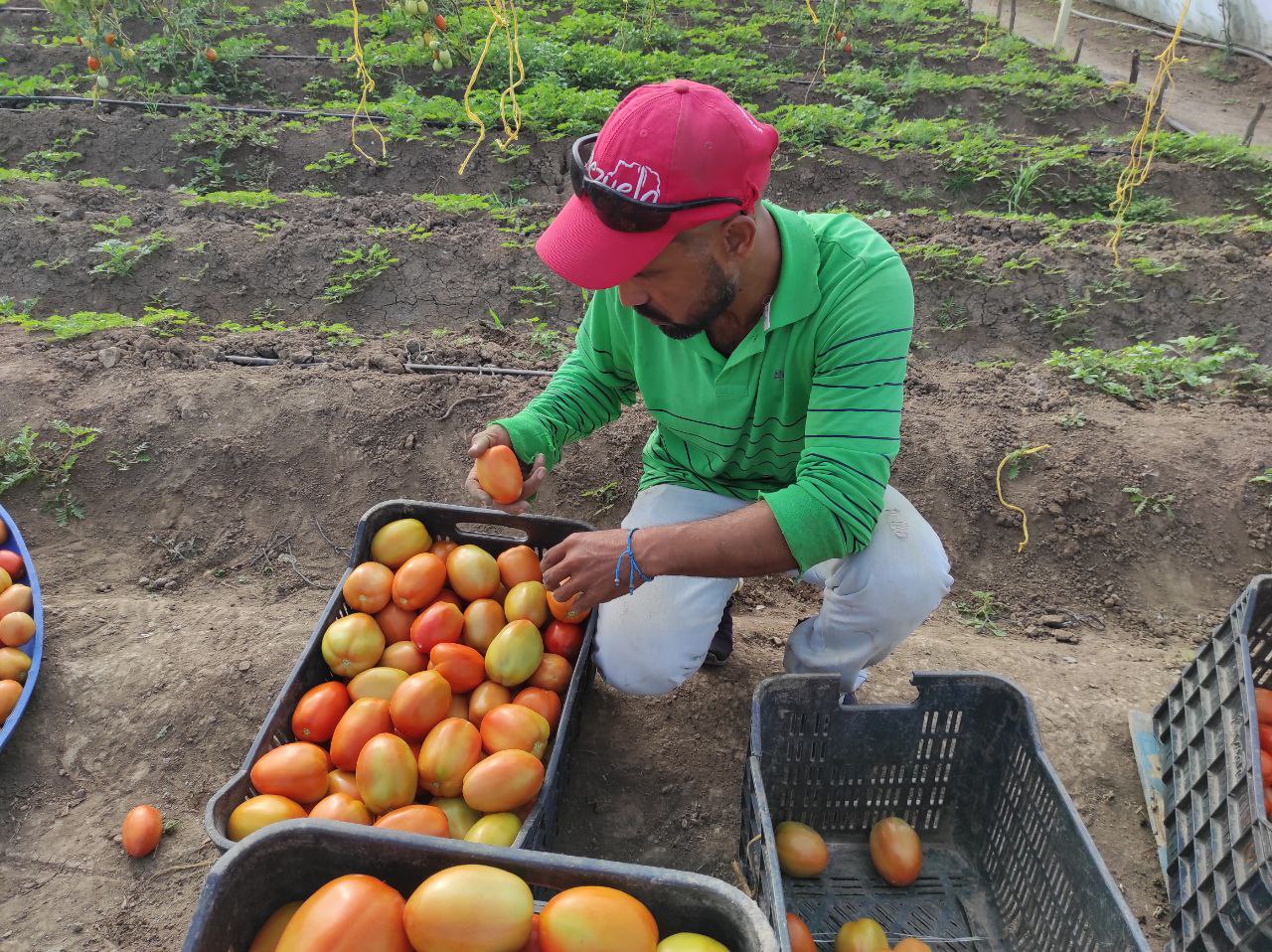
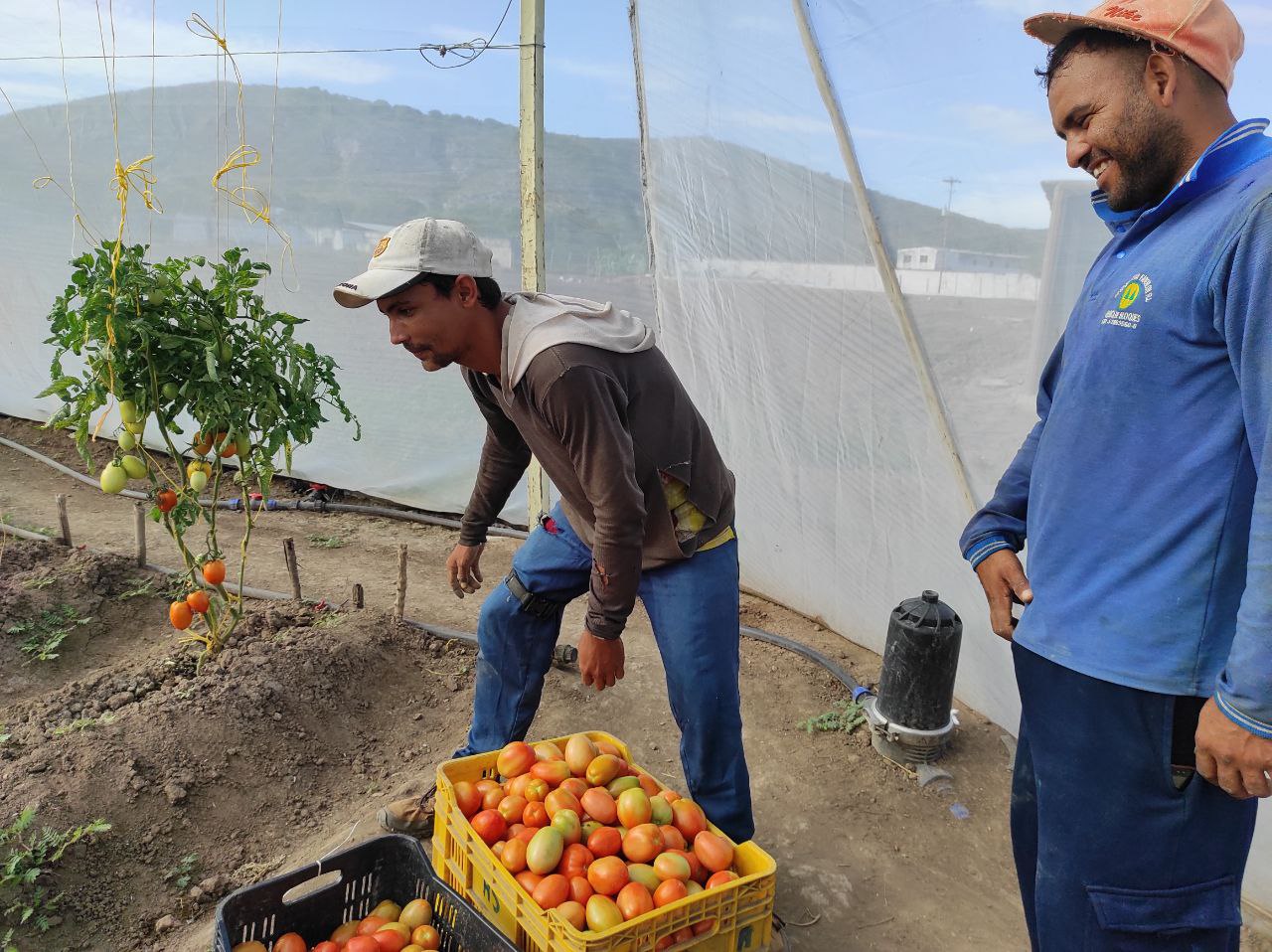
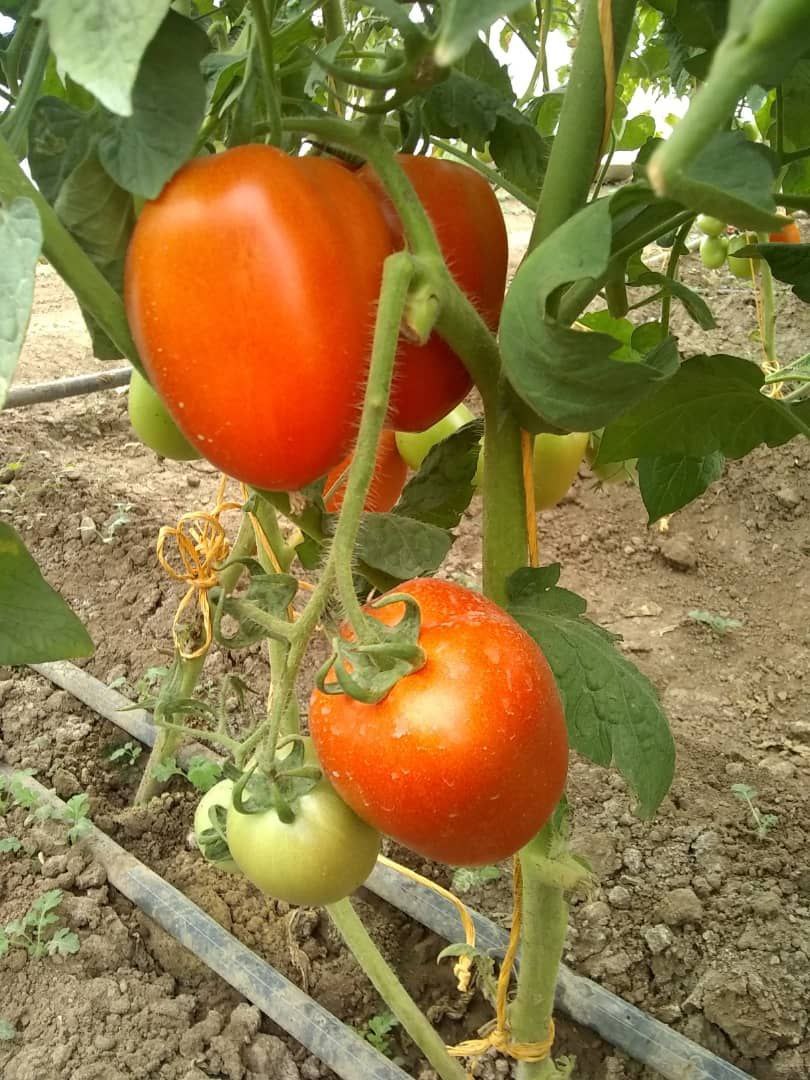
Our tomato was the biggest of the market by far, the difference between the tomato of open field and ours was noticeable and it is that a big tomato basket could weigh up to 25kg. In addition to that we obtained 4 sizes, since the market only pays for the large and medium basket, we had a larger size than the large one, something called "luxury" that we sold in hypermarkets in the area, as well as the medium tomato was similar to the large one of other farmers.
One of the tests we did was to let a basket of tomatoes ripen for 8 days, to see the durability of the product, and in 8 days only 5 tomatoes were damaged, the rest were red like a cherry but not watery or dehydrated. The open field tomato is usually damaged on the 4th day in quantities, and this is because we use silicon in the soil, which is a very good fertilizer for plants and gives durability to the fruits.
.jpg)
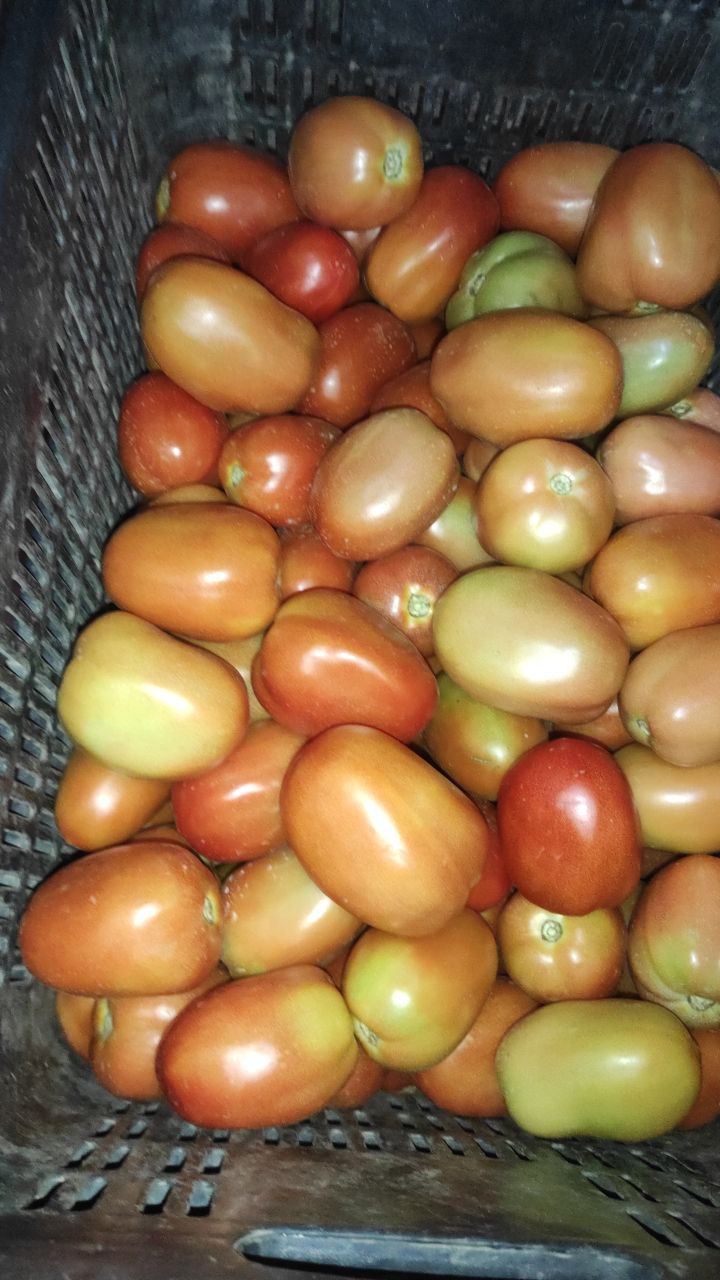
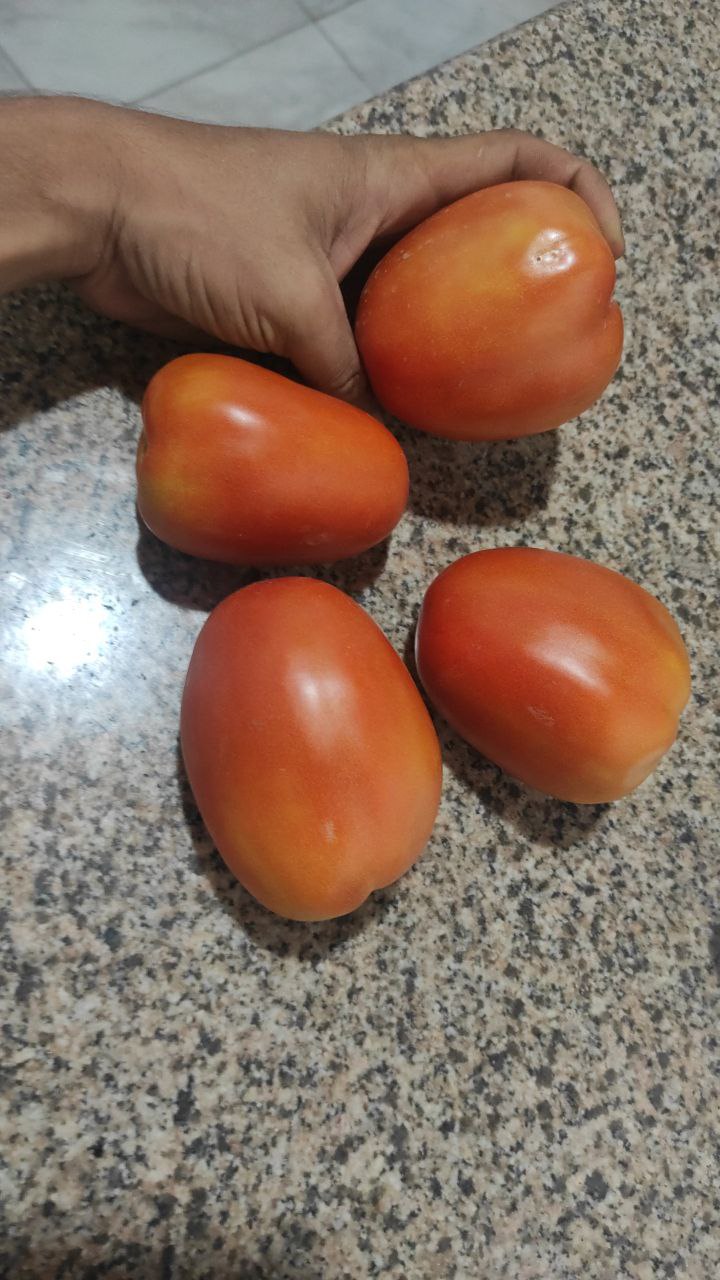
Unfortunately the leaf spots on the leaves spread too quickly, there was no chemical or biological fungicide to control them, and this affected us too much in the fruit set and fruit filling, we lost flowers, fruits and stems of plants completely. Although we had hoped that the new shoots would not have these characteristics, after a few days, they also began to get infected with Alternnaria and Phytophthora.

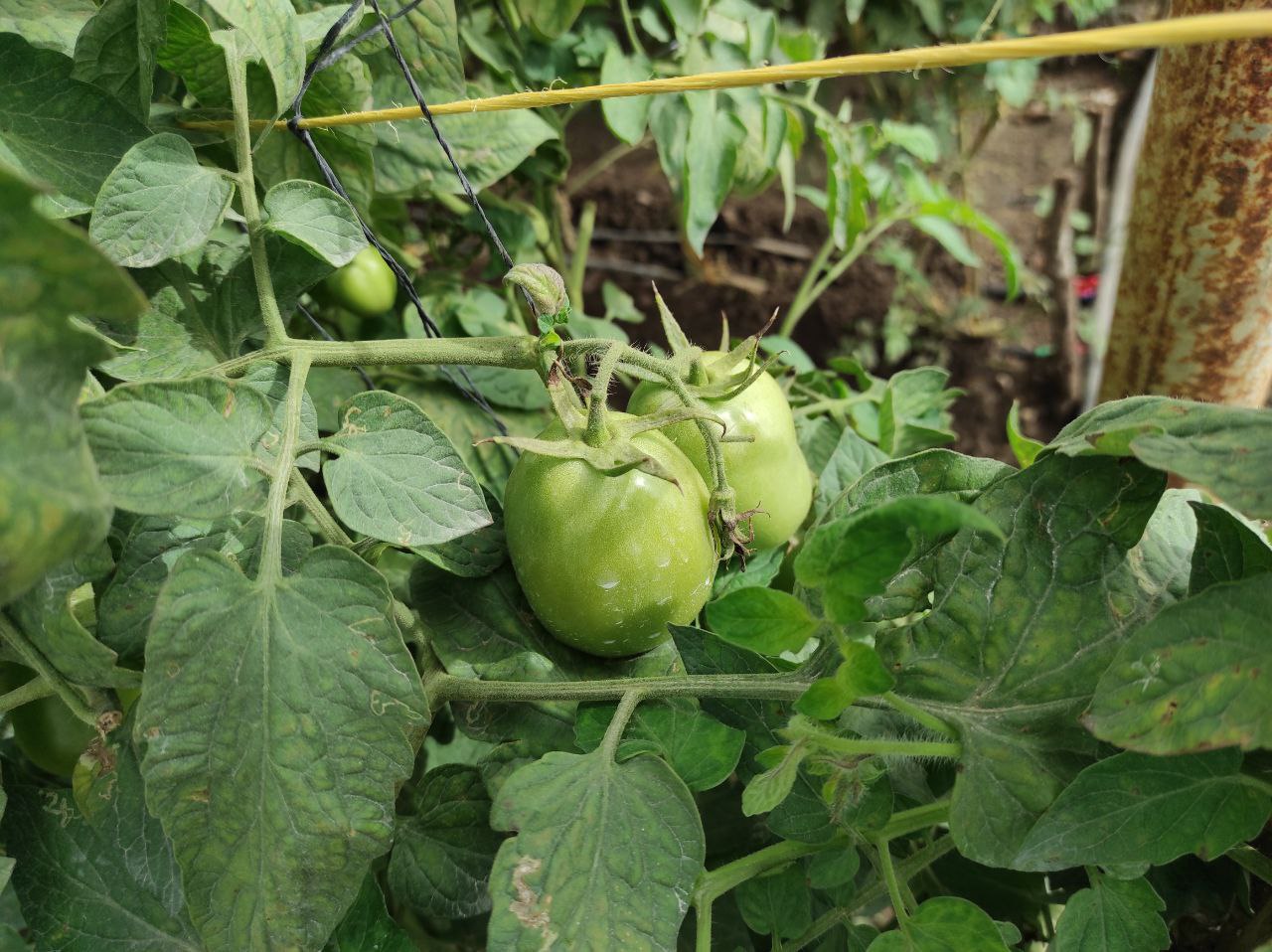
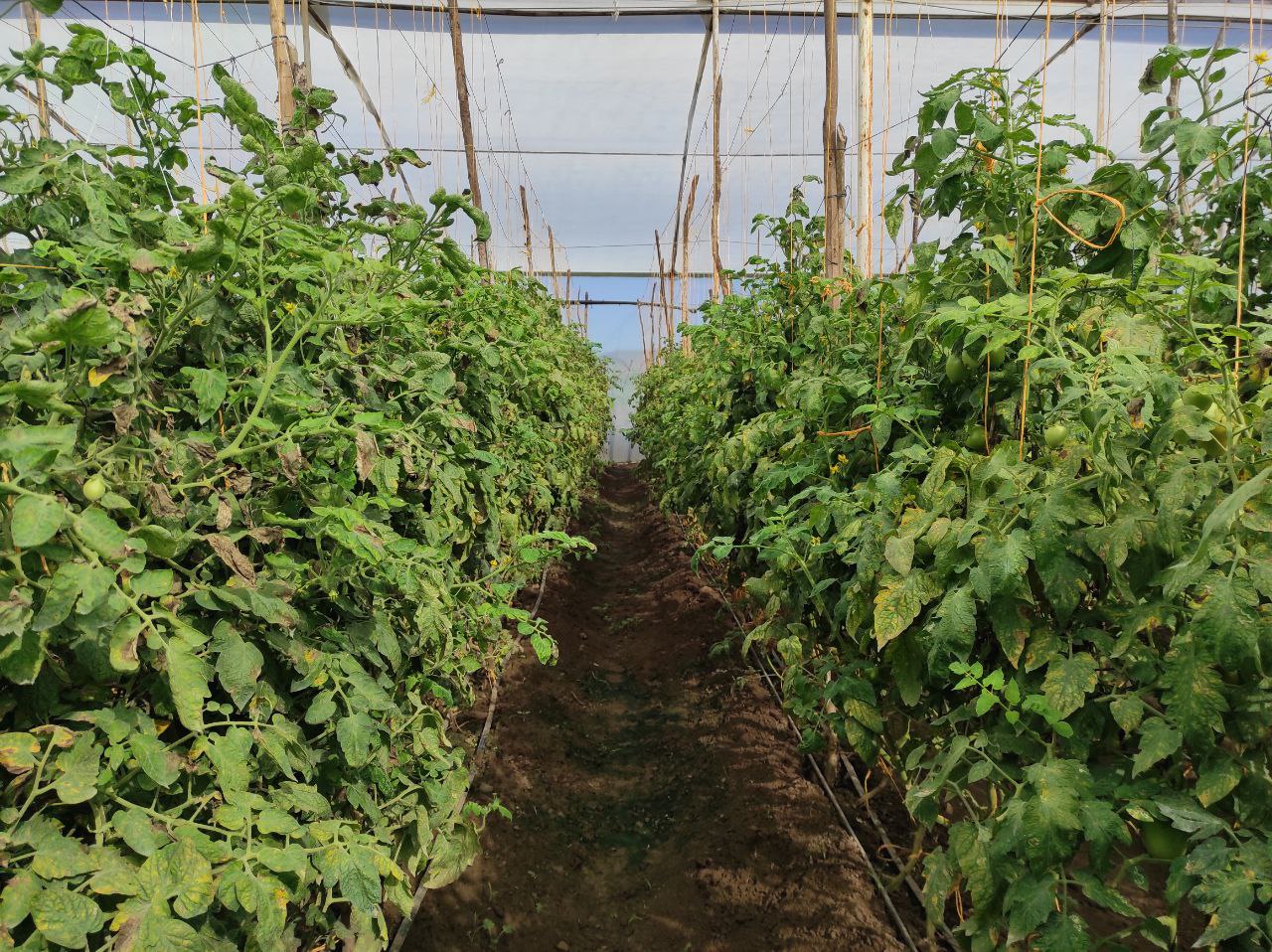
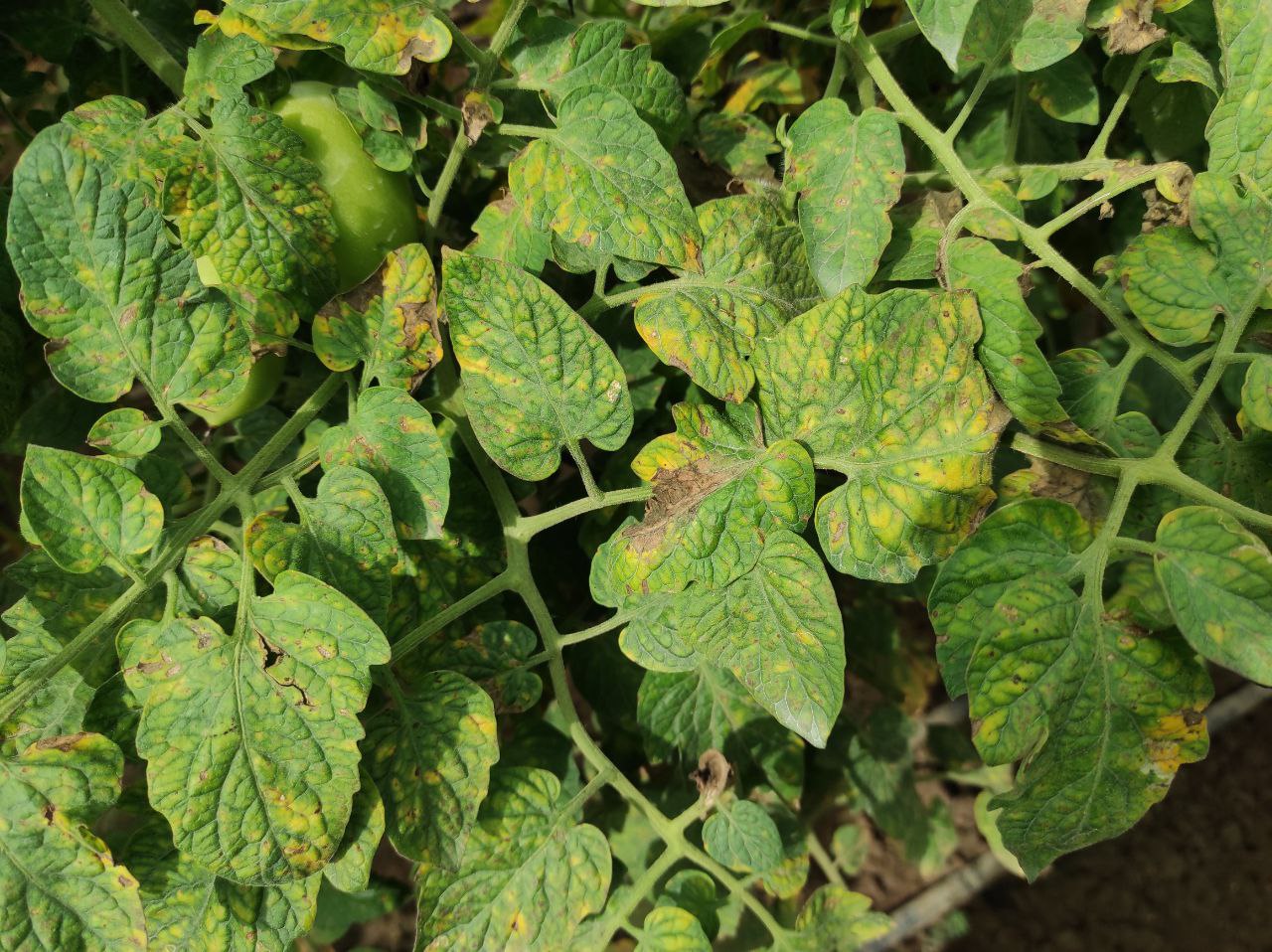
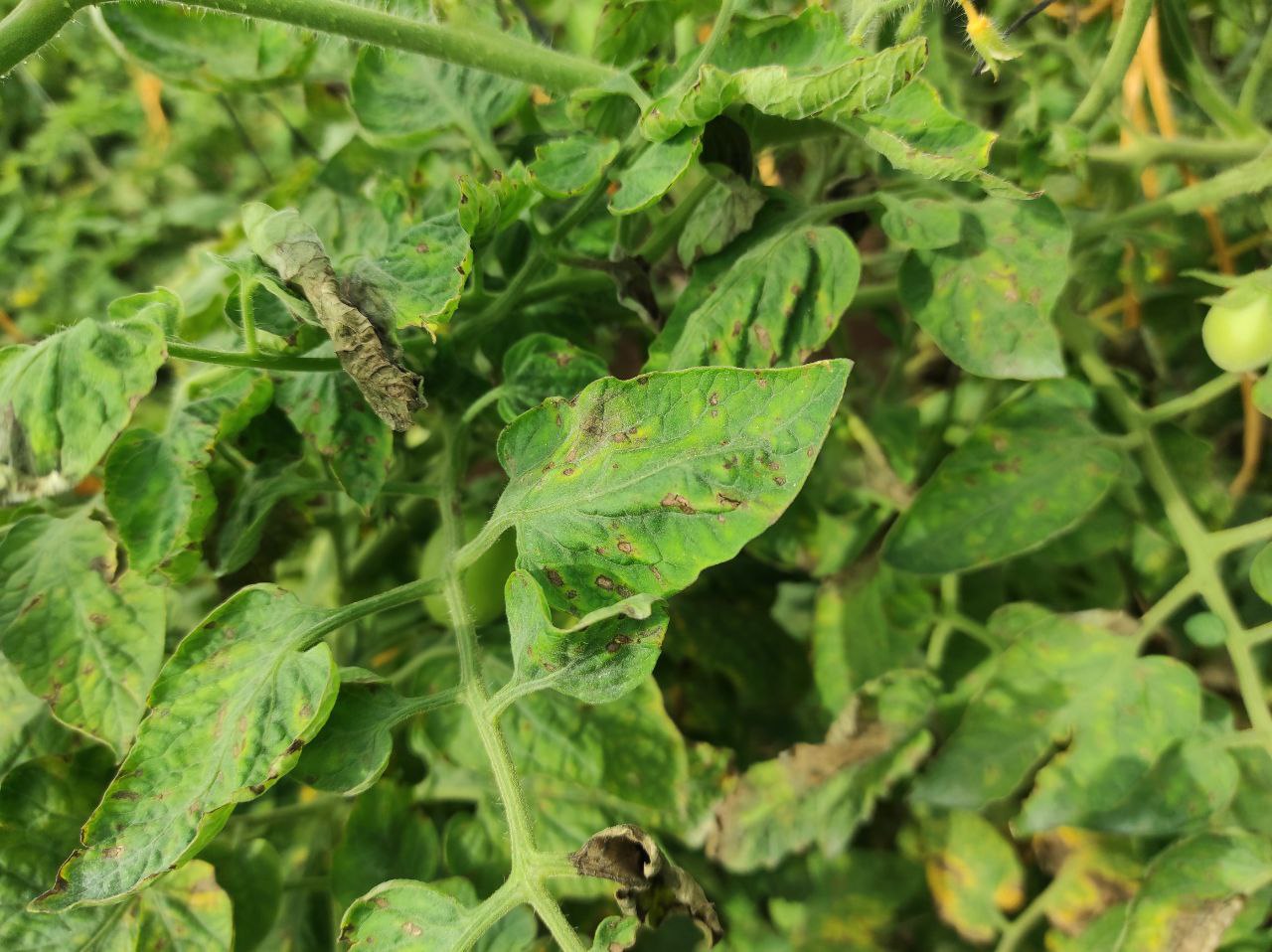
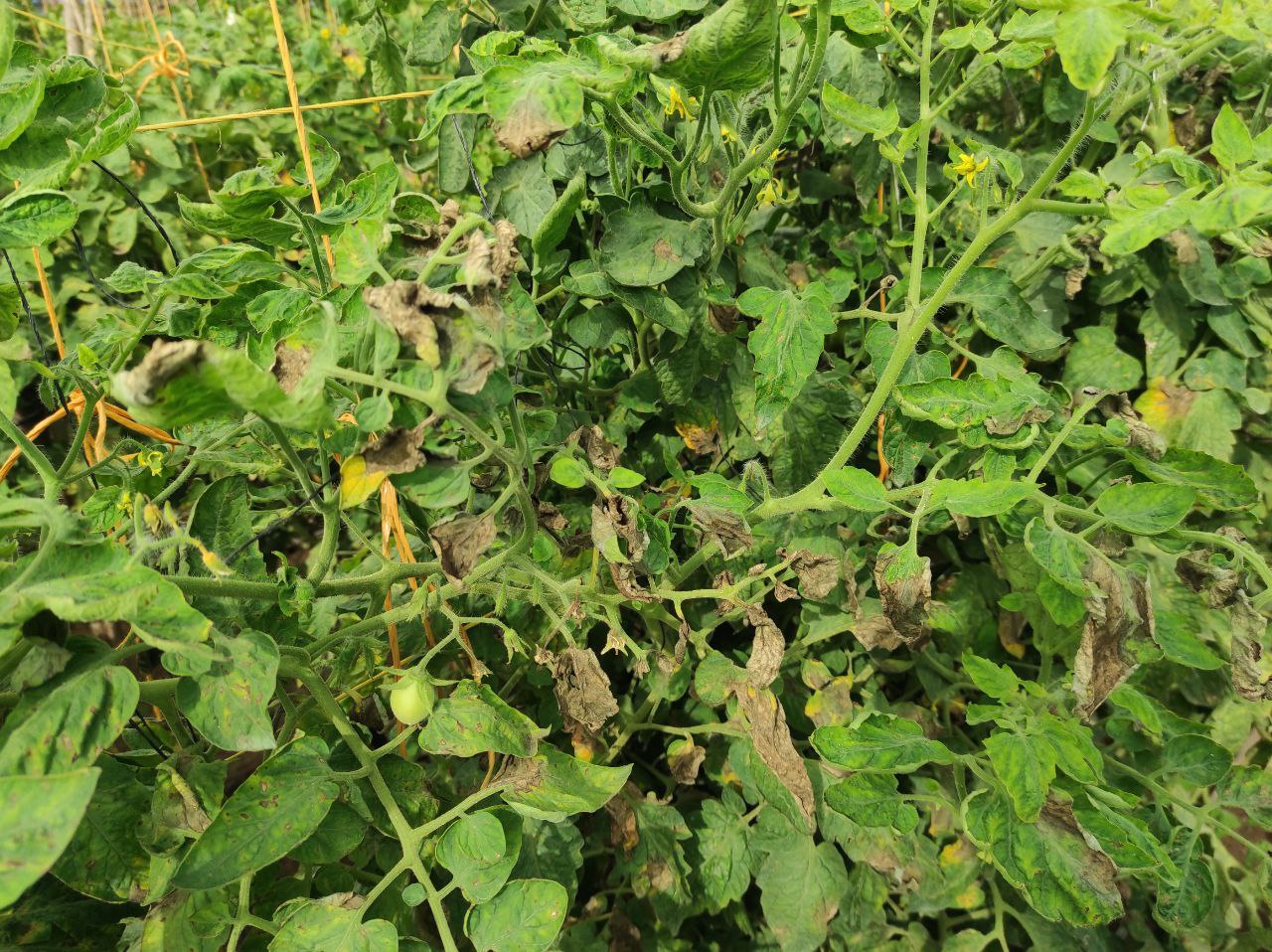
Although there are exemplary plants that have a good and beautiful tomato load, there are others that are in a terrible state, so the last job we did was to remove all the leaves and plants that were in worse condition, so that the leaves do not gather so much and continue to spread faster.
Before the size of the plants was so high and incredible that we had to use a suit to apply the insecticides or fungicides with the fumigator, so as not to get soaked.

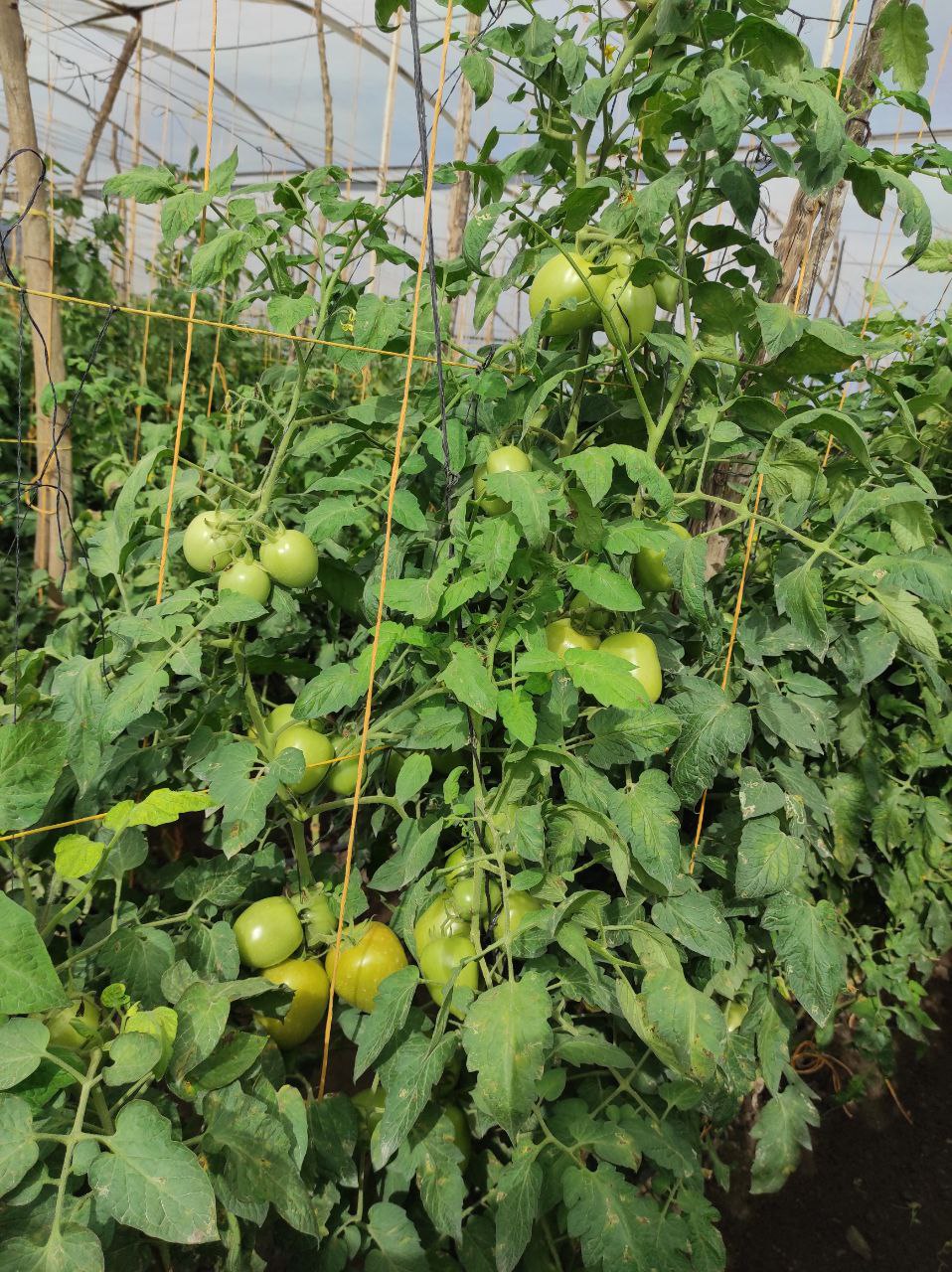
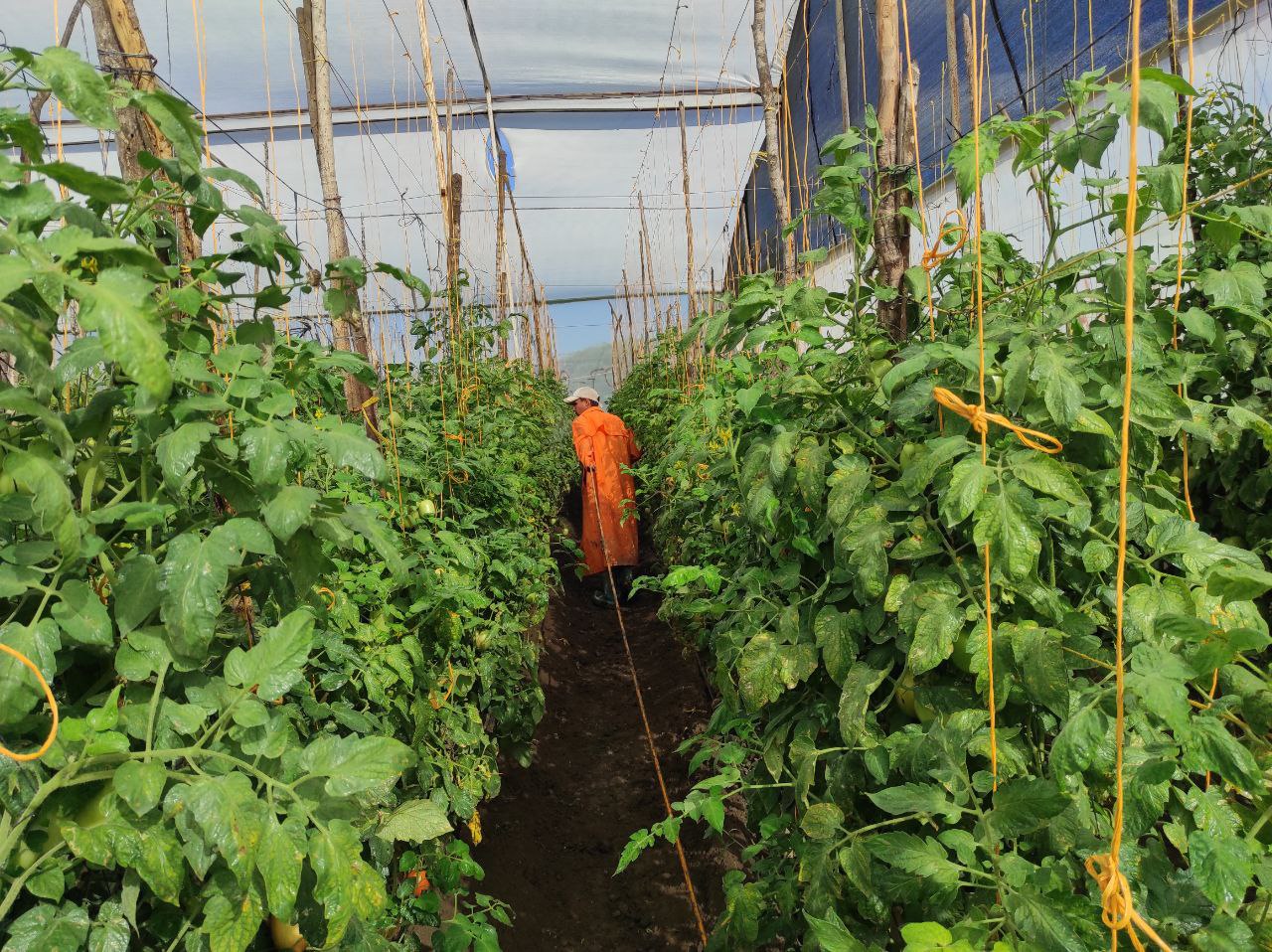
The result of pruning these plants and the change could be noticed from far away, it was not necessary to enter the greenhouse to see it, you could see the fruits, the plants seemed to sprout again and continue their normal flowering process, however again the rains affected us.
We applied a hormone for growth and fruit ripening called Hormo Green, which has some micro elements and naphthaleneacetic acid and gibberellic acid, the leaves started to grow again, but the flowers are not growing normally, now they come out with some deformation or die in growth.
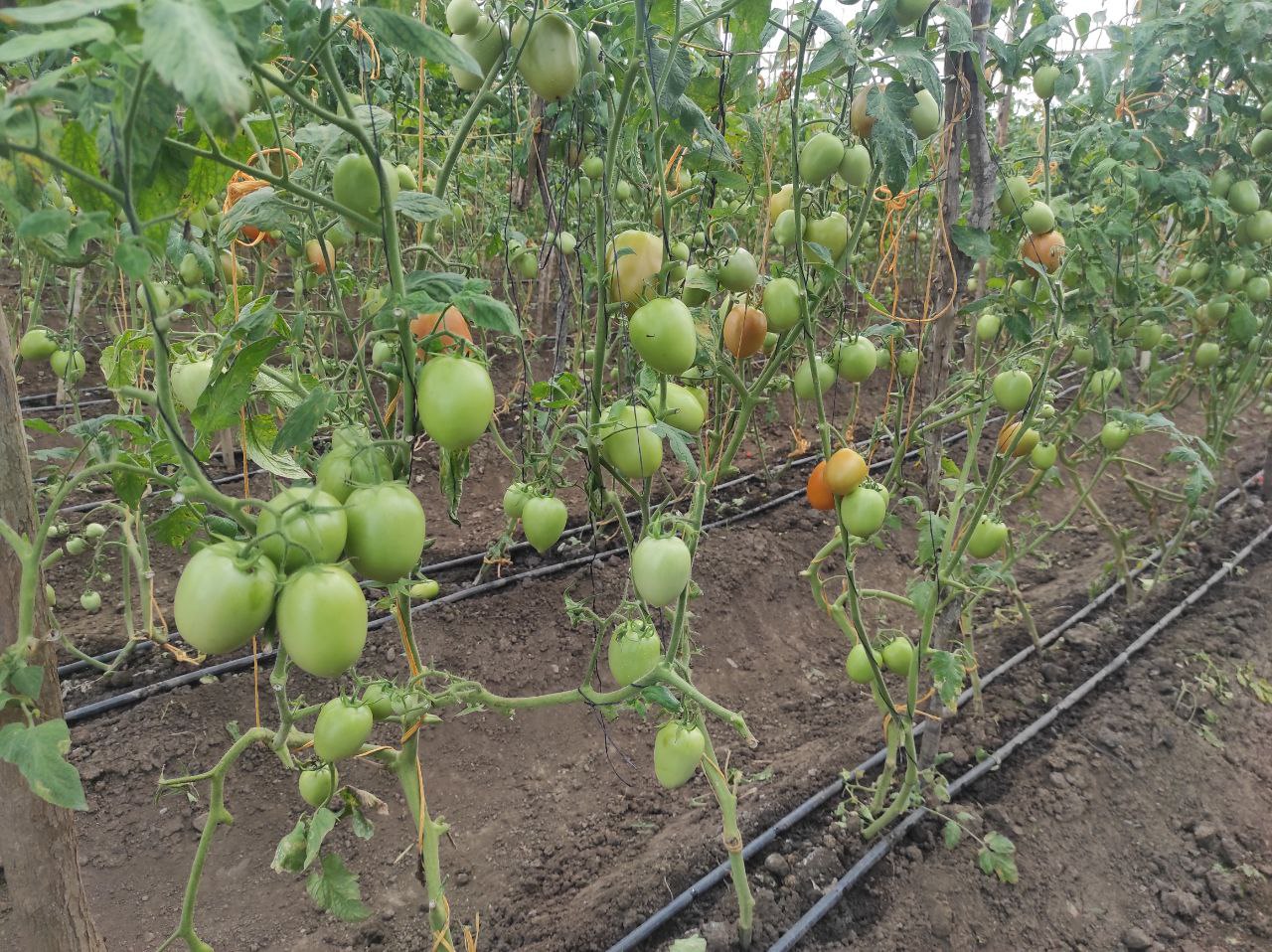
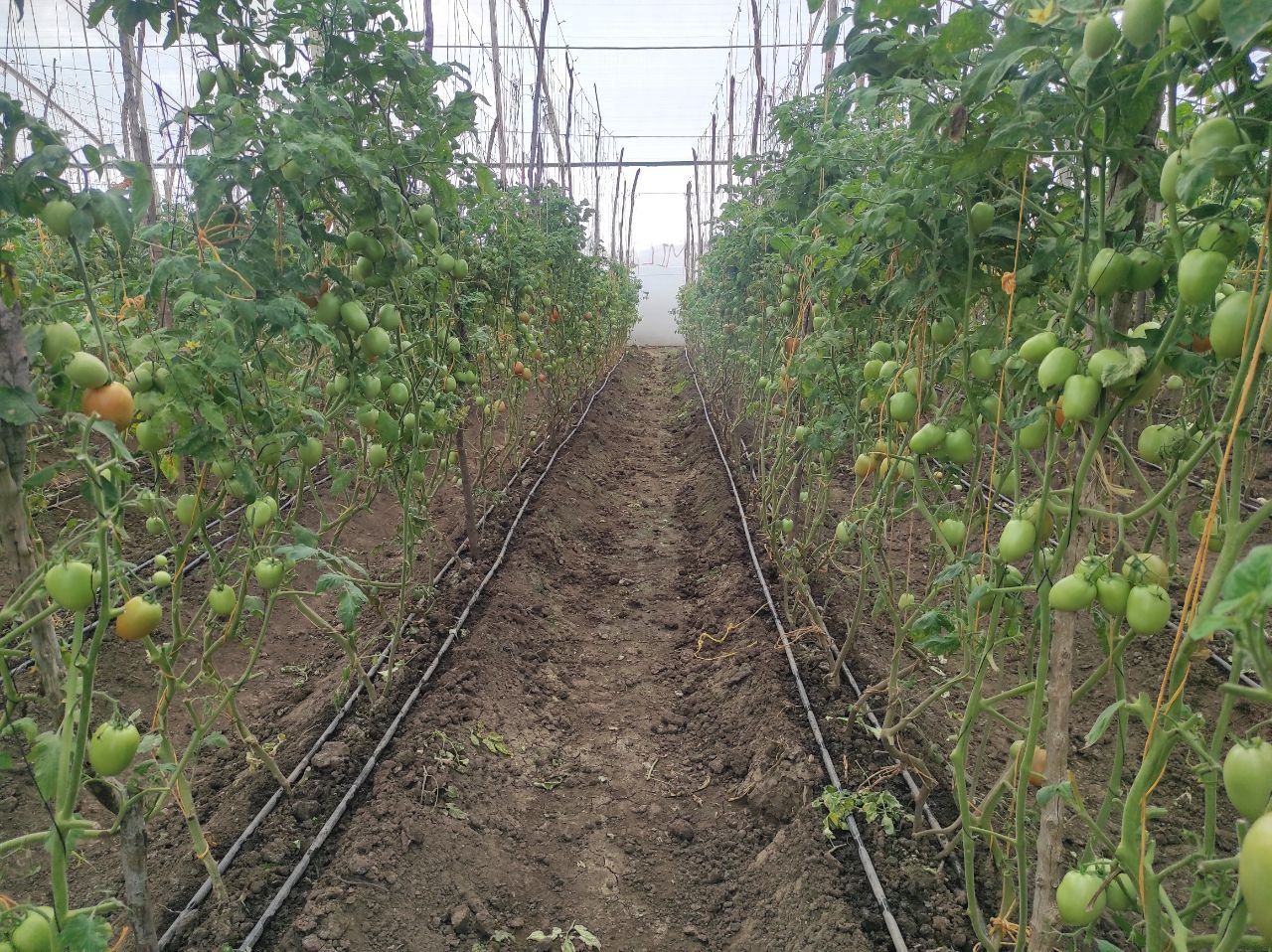

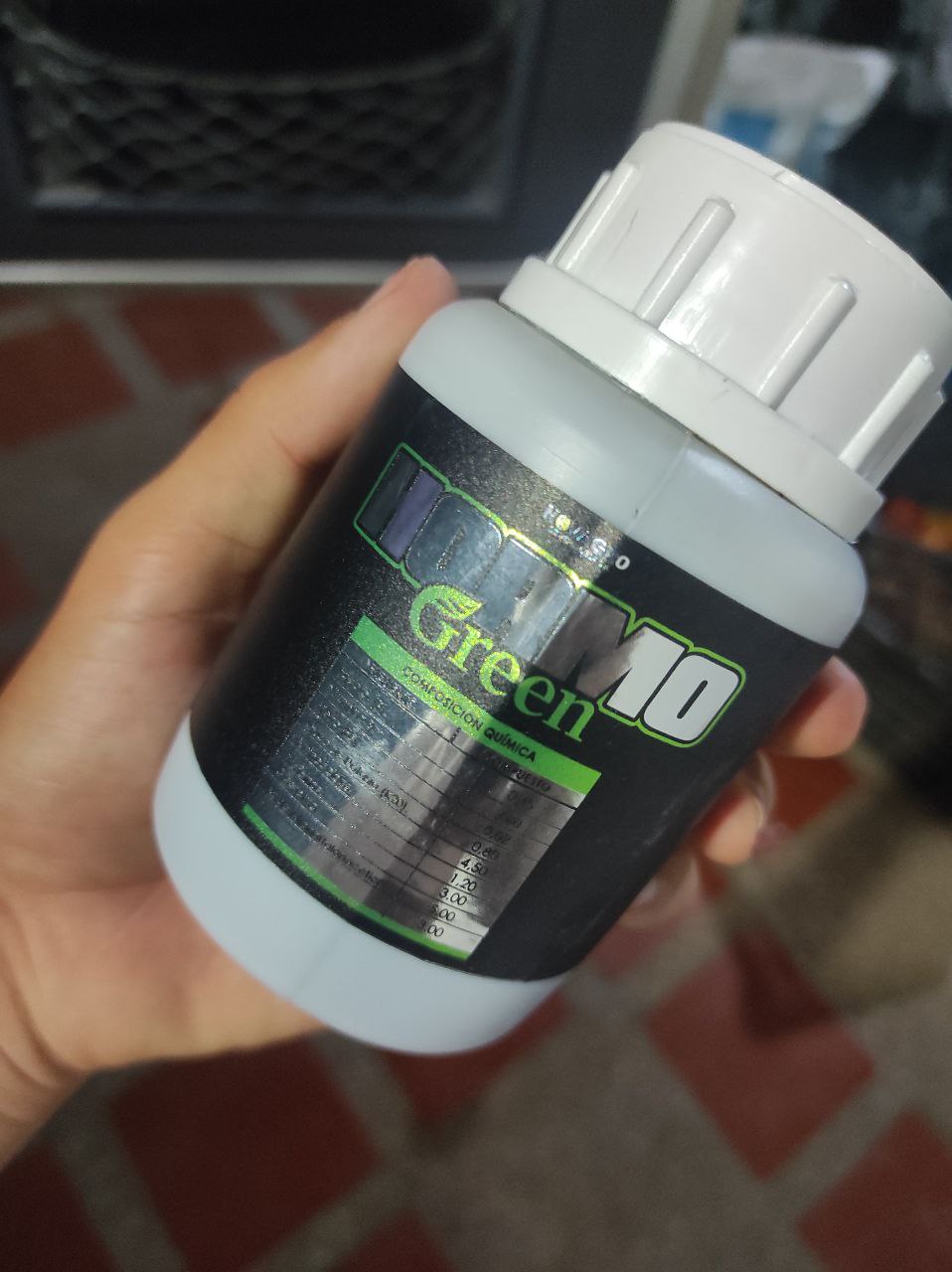
And well finally 2 weeks after the hormone they will see the leaves again, so there are still approximately 4 cuttings that could be 3 weeks more, productively speaking it is not profitable to keep these plants longer because the cost of applying fertilizers is higher than the profits, because weekly we were getting 3 large and 5 medium baskets, at the current price would be 100$, but 20$ are to pay labor, so we are just leaving the plants there to wait for the next commercial cycle.
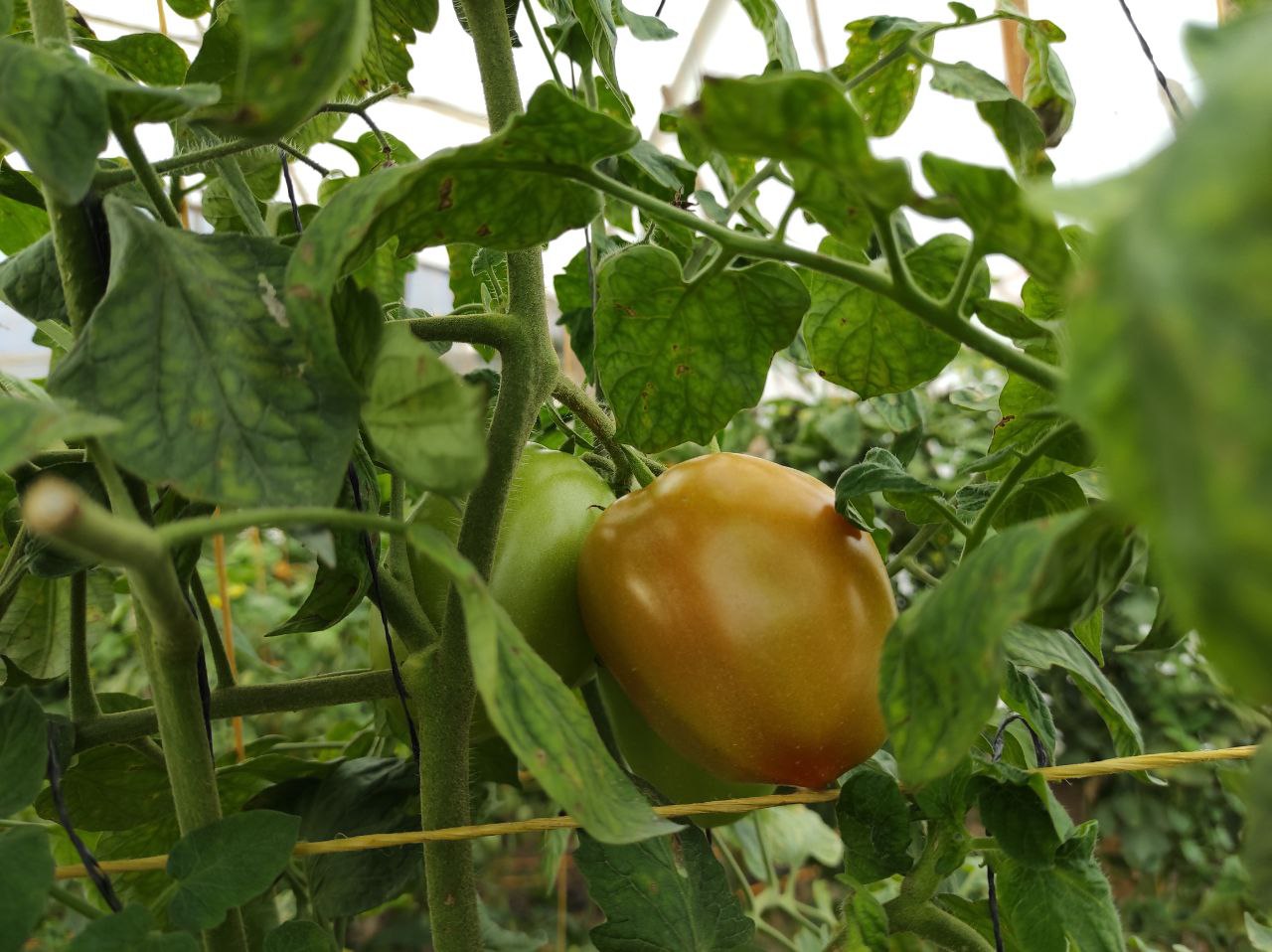
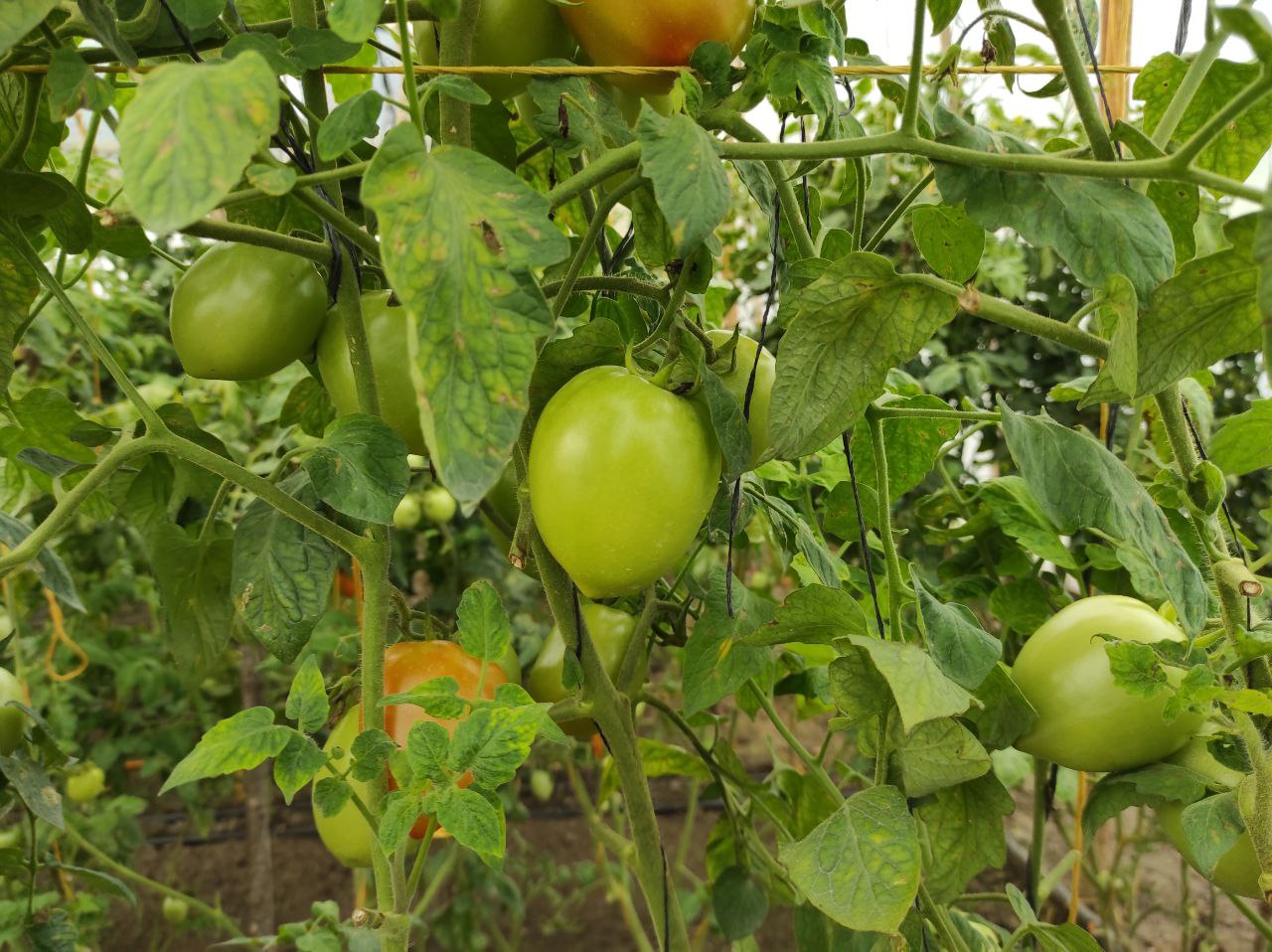
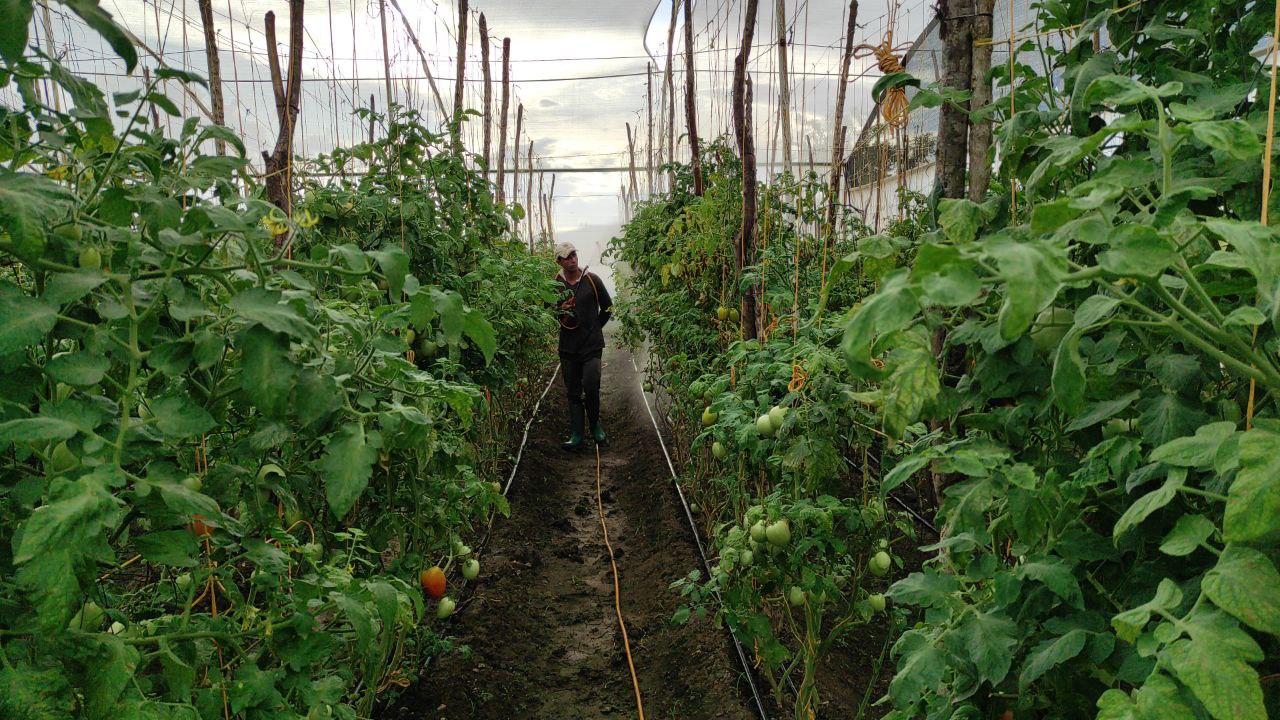
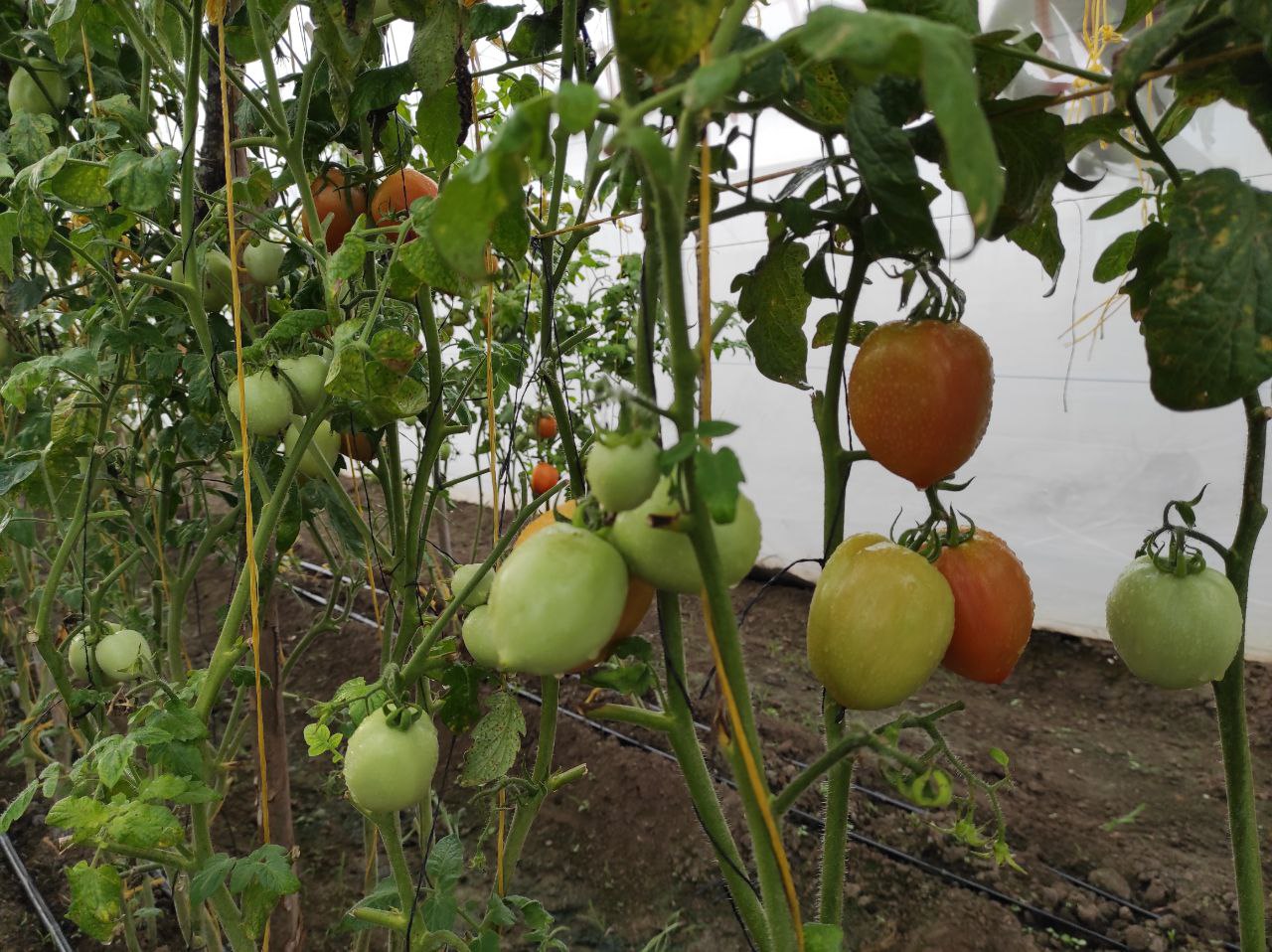
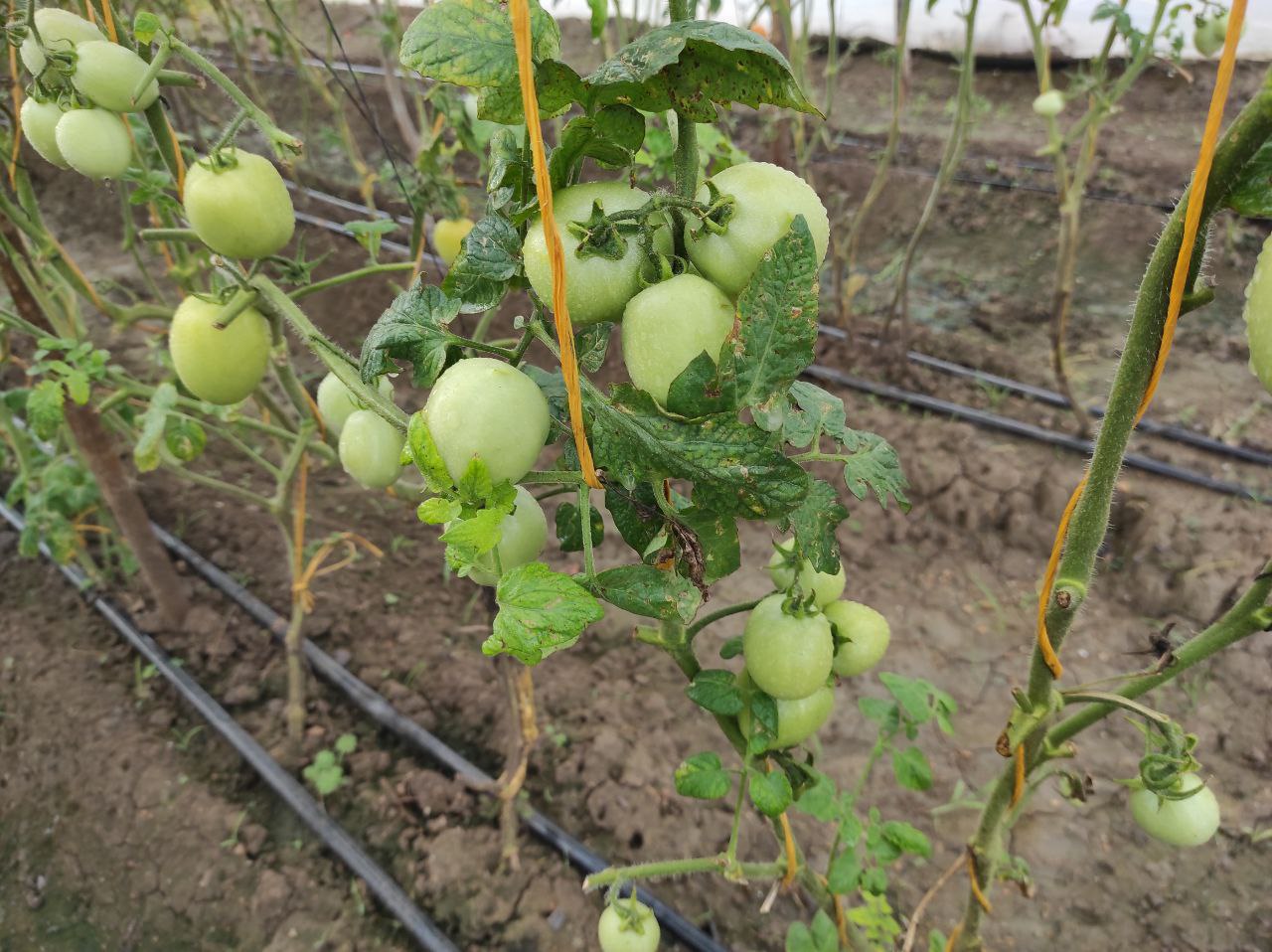
Finally it has been a pleasure to share with you the period of this harvest, I hope in the next one to do the same with the whole process, but probably with another item and with other techniques to show.
All my posts from start to finish regarding these crops:
Versión en Español.
Luego de mas de 2 meses cosechando tomate de invernadero en épocas de lluvia (invierno), la cosecha se aproxima a su fin, ya que probablemente la ultima floración de las plantas sea la que estamos cortando semanal, pues las plantas se han visto muy afectadas por patógenos que dañan sus hojas y frutos y esto debido a las condiciones climáticas que se están dando.
Esta lluvia no es usual, en teoría aun faltaban semanas para que la temporada iniciara correctamente en los meses de Octubre, sin embargo la madre naturaleza invirtió los papeles, en Europa y parte de Asia hay una sequia extrema, mientras que en mi continente hay lluvias inesperadas, lo cual afecta todas las cosechas.
El tomate que tenemos tipo Álvaro tiene aproximadamente 5 meses, 75-80 Días para la maduración de frutos y 5 semanas cortando cada 4 días, cada vez la cantidad de cestas obtenidas es mucho menor, y esto se debe a que esta finalizando su ciclo de vida.
De igual manera otro tipo Shanty que es mayor por 17 días, pero esta en las mismas condiciones.

Los primeros frutos de estas plantas fueron increíbles, un tamaño, brillo y consistencia único, el peso promedio de un tomate es de 150-170 gr, nosotros obtuvimos tomates de 200gr, una verdadera locura, además de eso tenían un color rolo brillante muy llamativo y el promedio fue un poco bueno.
En un principio la cantidad de tomate que obteníamos por semana era la indicada, sin embargo el tamaño disminuyo mucho mas de lo normal y la cantidad de flores también, comenzaron a caerse, pero esto por las lluvias que nos impedían administrar abono por riego, al igual que micro elementos a las hojas y flores del tomate.
La cantidad de mano de obra que requiere un cultivo de tomate en invernadero, es similar a sembrar en campo abierto, por lo menos una hectárea, y los gastos son mayores, cosa que no debería ser ya que la idea es reducir costos, pero en invernaderos se quiere la durabilidad de la planta por meses, por eso debe tratarse muy bien.






Nuestro tomate era el mas grande del mercado por mucho, se notaba la diferencia entre el tomate de campo abierto y el nuestro y es que una cesta de tomate grande podía pesar hasta 25kg. Además de eso obteníamos 4 tamaños, ya que en el mercado solo se paga la cesta grande y mediana, nosotros teníamos un tamaño mayor al grande algo denominado "lujo" que vendíamos en los hipermercados de la zona, al igual que el tomate mediano era similar al grande de otros agricultores.
Una de las pruebas que hicimos fue dejar una cesta de tomate madurar por 8 días, para ver la durabilidad de producto, y en 8 días solo 5 tomates se dañaron, el resto estaba rojo como una cereza pero no estaban aguados ni deshidratados. El tomate de campo abierto suele dañarse al 4to día en cantidades, y esto se debe a que utilizamos silicio en la tierra, que es un muy buen abono para las plantas y le da la durabilidad a los frutos.
.jpg)


Lastimosamente las manchas foliares en las hojas se expandieron demasiado rápido, no hubo fungicida químico o biológico que las controlara, y esto nos afecto demasiado en el cuajado de frutos y llenado de frutos, se perdieron flores, frutos y tallos de plantas por completo. Aunque teníamos la esperanza que los retoños nuevo no tuvieran estas características, al pasar unos días, también comenzaban a contagiarse, con Alternnaria y Phytophthora.






Aunque hay plantas ejemplares que tienen un carga de tomate buena y bonita, hay otras que están en un estado pésimo, por lo cual el ultimo trabajo que le hicimos fue deshojar todo, a tal punto de eliminar las hojas y plantas que estaban en peor estado, para que las hojas no se junten tanto y se siga propagando mas rápido.
Antes el tamaño de las plantas era tan alto e increíble que debíamos utilizar un traje para aplicar los insecticidas o fungicidas con la fumigadora, para no salir empapados.



El resultado de podar estas plantas y el cambio se podía notar desde lejos, no hacia falta entrar al invernadero para verlo, se podían ver los frutos, las plantas parecían volver a retoñar y seguir su proceso de floración normal, sin embargo nuevamente las lluvias nos afectaron.
Aplicamos una hormona de crecimiento y maduración de frutos llamada, Hormo Green que tiene algunos micro elementos y ácido naftalenacético y ácido giberélico, se volvieron a poblar de hojas nuevamente, pero ya las flores no están naciendo normal, ahora salen con alguna deformación o mueren en el crecimiento.




Y bueno finalmente 2 semanas después de la hormona verán nuevamente las hojas, por lo cual aun quedan aproximadamente 4 cortes que podían ser 3 semanas mas, productivamente hablando no es rentable mantener estas plantas por mas tiempo ya que el costo de aplicar abonos es mayor a las ganancias, por que semanalmente estábamos obteniendo 3 cestas grandes y 5 medianas, al precio actual serian 100$, pero 20$ son para pagar mano de obra, así que solo estamos dejando allí las plantas para esperar el próximo ciclo comercial.





Finalmente ha sido un placer compartir con ustedes el periodo de esta cosecha, espero en la siguiente hacer lo mismo con todo el proceso, pero probablemente con otro rubro y con otras técnicas para mostrar.
Todos mis post de inicio a fin con respecto a estos cultivos:
Those tomatoes are amazing! They are perfect for salad. Good afternoon!
Su post ha sido valorado por @ramonycajal